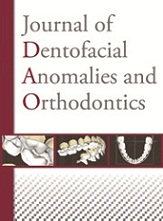Article contents
Interventional calendar and protocol for cleft lift and palate repair at the maxillofacial and plastic surgery department of the Armand Trousseau Children’s Hospital (AP-HP, Paris)
Published online by Cambridge University Press: 09 February 2012
Abstract
Parents want their children’s’ faces, the most visible part of their bodies, one that marks their identity throughout life, to be perfect. To satisfy this understandably urgent desire, a high quality of primary treatment for cleft lip and palate is essential and must satisfy a double objective: restore normal morphology and normal function. The functional, morphological, and esthetic prognoses depend on the character of the defect, whether it stands alone or is associated in a syndrome with other malformations. Important sequellae flow from the quality of the initial repair, as a consequence of the surgery and other therapies as well as from the deformity itself.
Before the year 2000, the Maxillo-facial and Plastic Surgery Service at the Armand Trousseau Hospital of the Pierre and Marie Curie Faculty of Medicine adhered to the protocol that Malek had described, making an initial repair of the soft palate at 3 months and then a cheiloplasty, with upper and lower triangles, and closure of the hard palate at 6 months. Since then we have adopted the more functional approach that Talmant described, integrating systematic nasal surgery and the type of lip surgery that Millard suggested without leaving any residual exposed bone after closure of the osseous cleft. We then perform gingivo-periosteal surgery with bone grafts on patients when they were between 4 and 6 years of age, after orthodontic therapy had been completed. This constitutes the last stage of primary treatment.
The therapeutic approach we have been using on our service, which has evolved of over the last 20 years, has come to define its principal objective as integration of extensive rehabilitation into the very first stages of our multi-disciplinary therapy so as to minimize the establishment of faulty functioning of phonation, lip competence, and ventilation while avoiding any intervention that would have a harmful impact on facial growth. This multi-disciplinary approach, which integrates surgical evaluation and protocol, is indispensable and fully justifies treatment of patients with cleft lip and palate at accredited centers.
- Type
- Research Article
- Information
- Journal of Dentofacial Anomalies and Orthodontics , Volume 14 , Issue 3: Labio-maxillary-palatal clefts , September 2011 , 306
- Copyright
- © RODF / EDP Sciences
- 1
- Cited by


